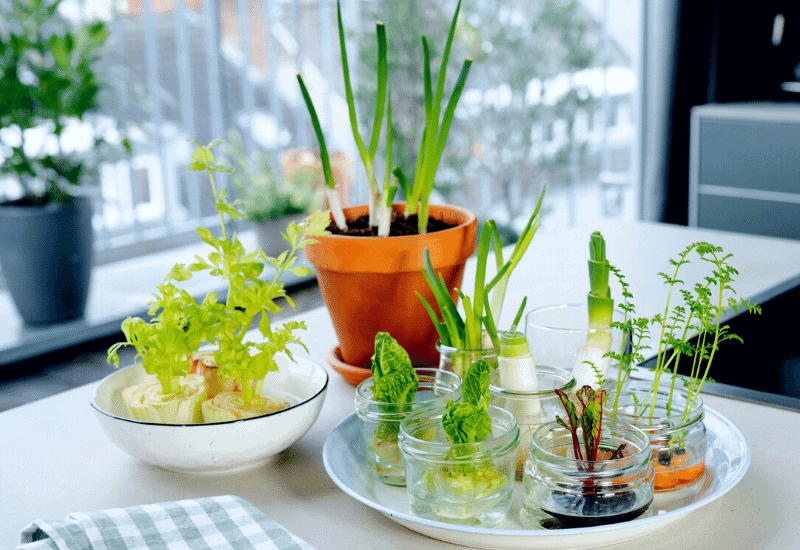
You might be surprised to learn that regrowing vegetables from scraps isn’t just some strange Pinterest trend. It’s something that you really can do, and it can be a great money saver, stretching your existing food budget.
The hair of a leek, the crown of a pineapple, stalk of lettuce or celery, and ends of your carrots could be used for something other than making compost. Some of them can even grow back indefinitely, with a little water, earth, light and a handful of care.
Not all vegetables can grow from scraps, and everyone has a different definition of scraps. But, some fruits, vegetables or herbs have the ability to grow back, even when only the part we consider “inedible” remains.
Of course, you won’t be able to get an amount of food that will allow you to become self-sufficient, but what a pleasure to harvest a piece of young onion from a piece that you were going to throw away!
I rounded up best vegetable and herb scraps you can regrow, along with our best tips for growing fresh veggies from kitchen scraps so you can enjoy their recurring harvest.
Head-Form, Leafy Veggies That Regrow Easily From Leftovers
Leafy vegetables that grow in heads are easy to grow from scraps as well. You have to cut off the base, leaving a one-inch piece and place it in water. It’s a lot easier than you might think.
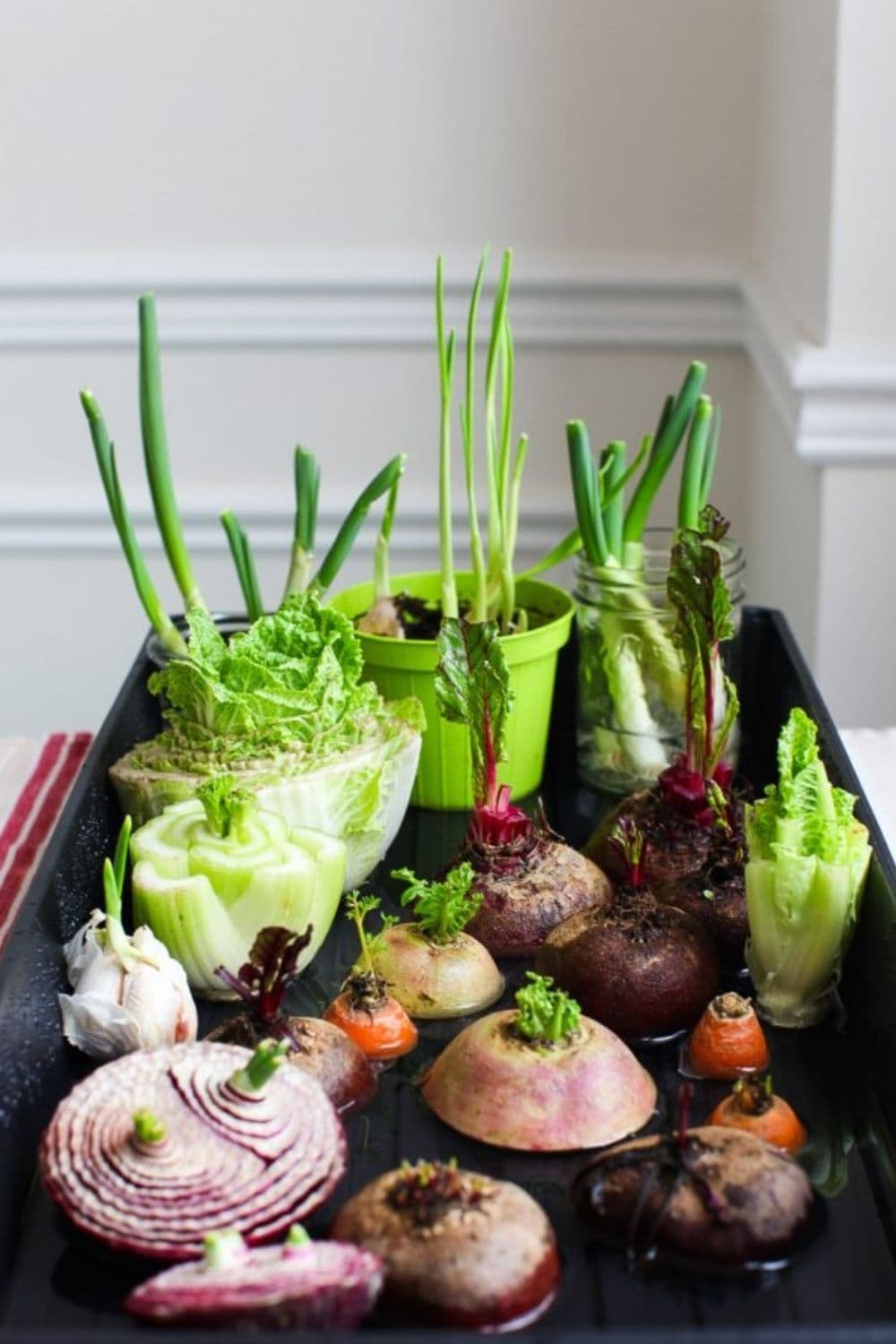
1. Regrow a heart of Celery
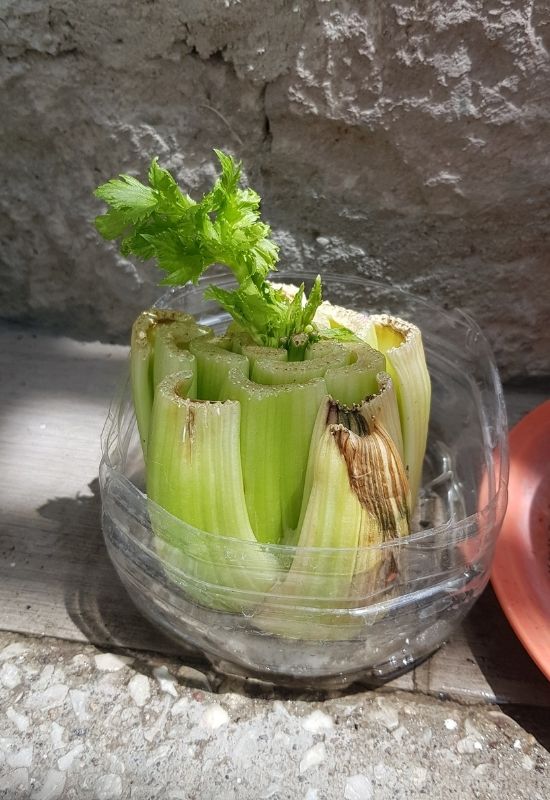
If you’re new to growing vegetables from scraps, celery is one of the easiest veggies to do so with for the first time.
Another option is to replant it in your garden at this point and let it grow into a full-size plant.
2. Regrow Lettuce & Bok Choy scraps in water
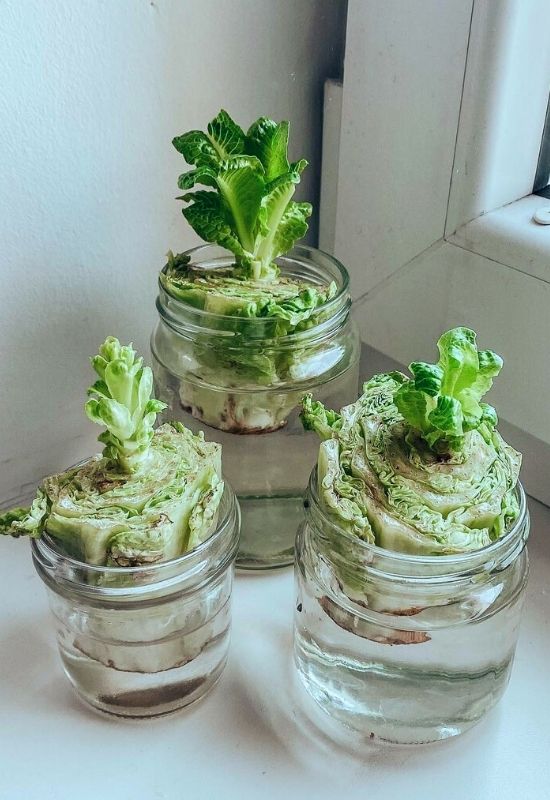
You can easily regrow lettuce and bok choy from scraps. Don’t toss out your leftover leaves.
It takes 3-4 days for new roots to appear with new leaves. At that point, you can put your growing lettuce plants into a pot of soil and keep growing it.
3. Regrow Lemongrass From kitchen Scraps
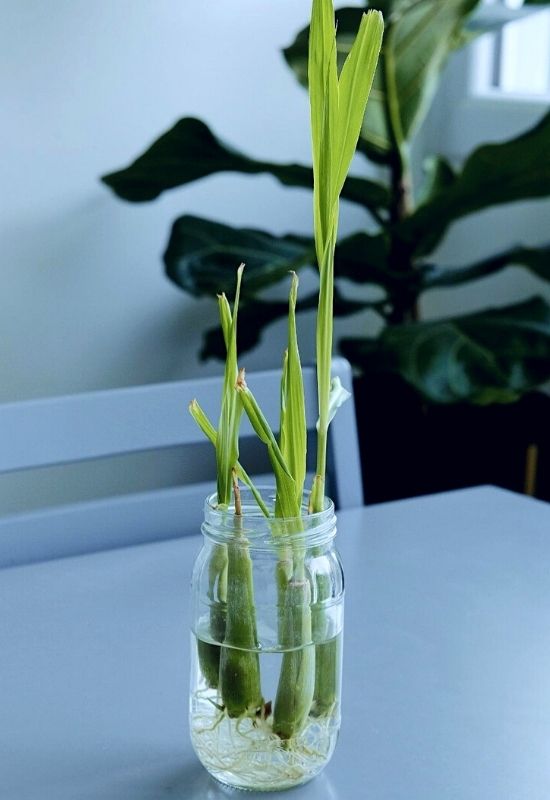
Not everyone likes to use lemongrass, and, for those who do like it, it can be hard to find in the store. A simple option is to regrow the ones that you already have! Believe it or not, lemongrass grows back like regular grass.
4. Regrow Cabbage leaves In Water
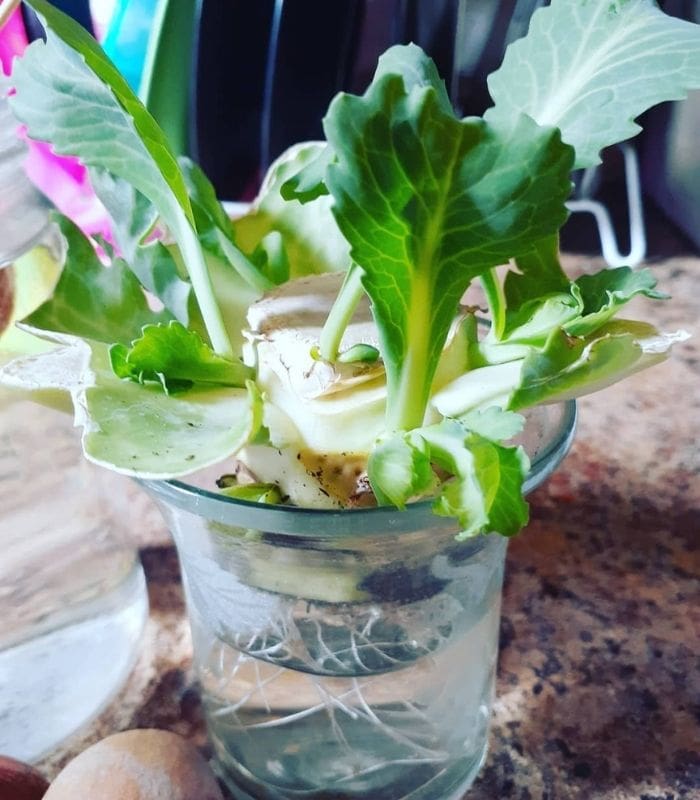
Some cabbage varieties (not all of them) can regrow while in the ground still. Resist pulling out the entire plant when you harvest the cabbage heads. Instead, cut a cross in the base and leave it in the ground. Often, a second head will emerge.
You also can regrow cabbage leaves if you have a chunk of the rooting base available. The heads at the store sometimes have the rooting base; see if you can find one.
5. Regrow Basil, Mint & Cilantro from Cuttings
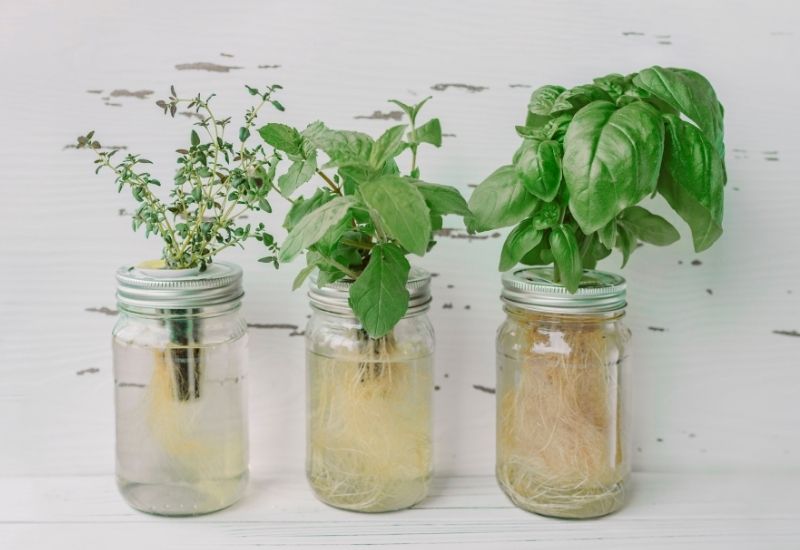
These aren’t the only herbs that can regrow from cuttings or scraps. If the herbs grow on stems, chances are you can regrow it from cuttings, but it needs to be around 4 inches long.
Bulb and Bulb-Like Vegetables
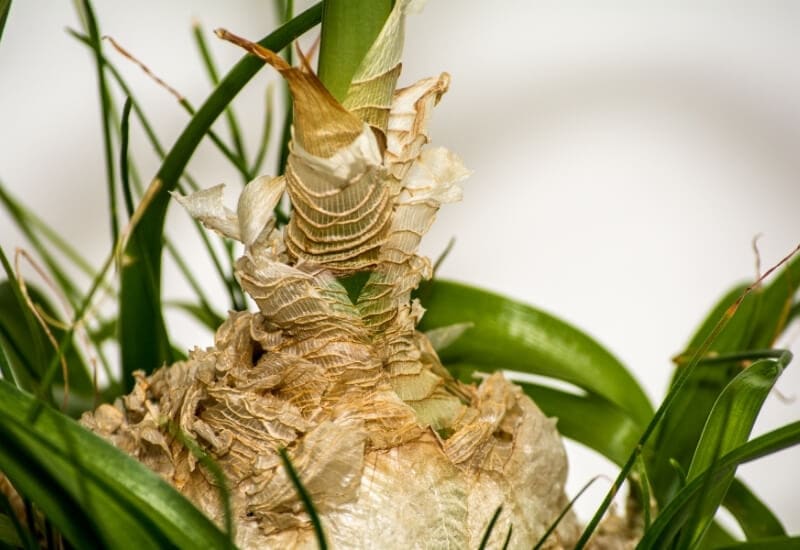
Vegetables that have a bulb-like base can root easily. You follow steps that are very similar to leafy veggies.
All you need is a piece of the root and a container of water. Sounds easy enough, right?
1. Regrow Garlic From Scraps

Everyone loves garlic – unless you’re a vampire – and growing garlic is an easy task, but you don’t need to grow entire beds each year. If you want to try growing vegetables from scraps, garlic should be at the top of your list.
A garlic bulb consists of several cloves, and you typically don’t need all of them to make your dishes.
2. Regrow Supermarket Leeks In Water
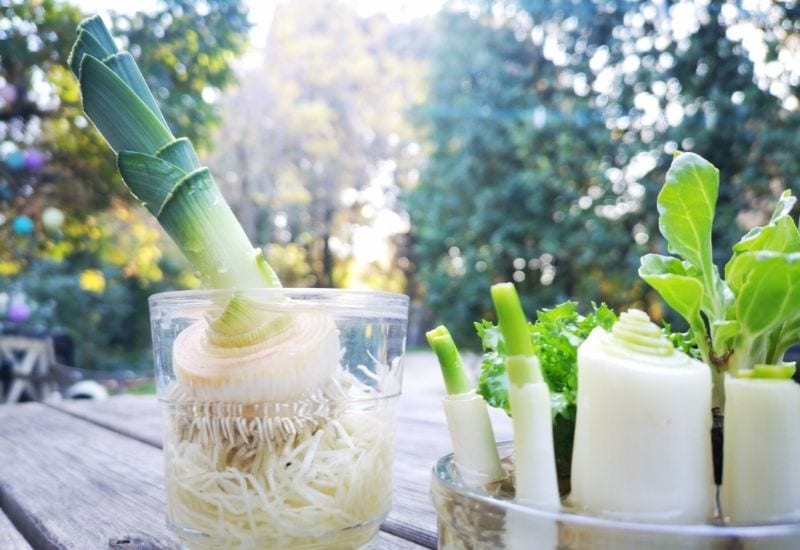
Leeks are also a member of the allium family, and you can grow them from scraps as quickly as onions and garlic grow from them. You need the rooting base of the bulb or stem to do so.
3. Regrow Bulb Fennel In Water
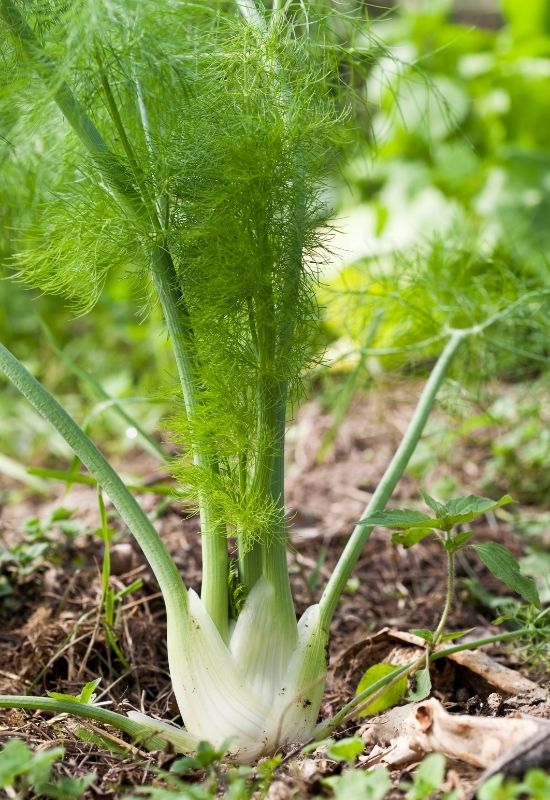
While not as popular as celery, bulb fennel grows back in nearly the same way as celery.
4. Regrow Onions From Discarded Onion Bottoms
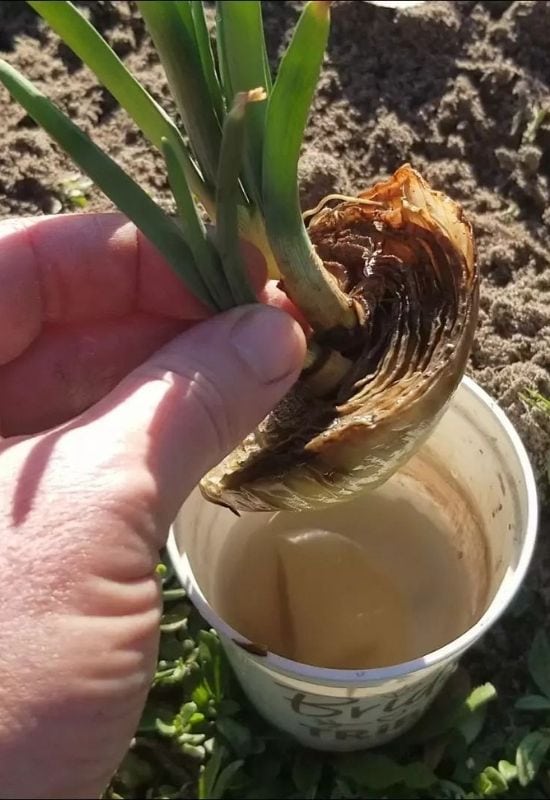
Onions can grow from scraps indoors and outdoors. They grow quite quickly from scraps.
If you’re trying to grow green onions, put the white base with the root intact in a container of water and keep it in direct sunlight.
The water will need to be changed out every few days.
The greens continue to grow, letting you snip it as you want for recipes.
Root Crops and Root-Like Vegetables to Regrow
Root crops are a great option if you want to try growing vegetables from scraps. All root crops, such as turnips and beets, are eaten the same way; you enjoy the roots and the top parts often get tossed out into the trash or compost pile. Instead, you can use that piece to regrow a new veggie.
1. Regrow Potatoes from Old Sprouted Potato Scraps
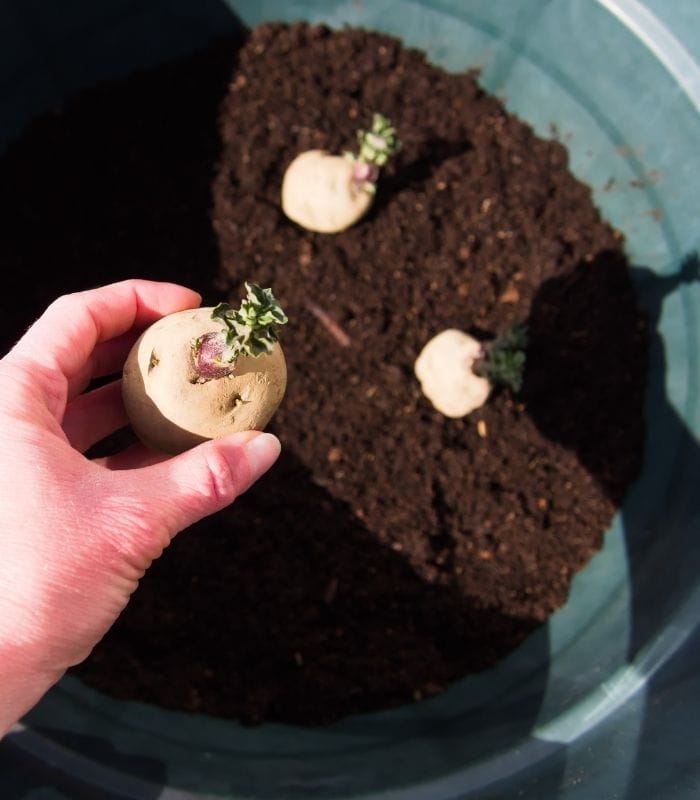
If you’ve left potatoes in your pantry for too long, then you know that little shoots grow on them over time. Those shoots are called “eyes,” and it’s how potatoes grow new plants. You can replant them in the garden to grow new potato plants in your garden.
Here’s how you can grow potatoes from scraps.
2. Regrow Carrots And Beets From Waste Tops
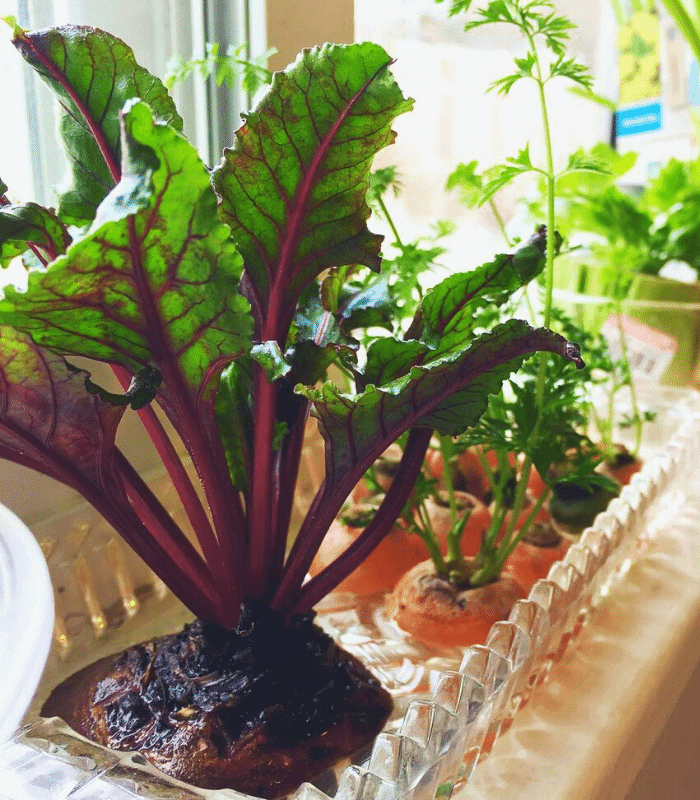
Any root crop, such as carrots, beets, parsnips, can regrow from scraps. If you keep the tops, where the leaves and stems meet the root, you’ll be able to regrow them.
The same process works for any root crop. Take the remaining portion that you saved and put it in a shallow container of water. It should cover the entire piece; only put a half an inch or so of water into the container. Within a week, new greens should start to grow.
You won’t regrow an entire carrot this way, but you can harvest the greens as they grow or wait until they’re large enough to replant in a container or garden bed.
3. Grow Sweet Potatoes In Water
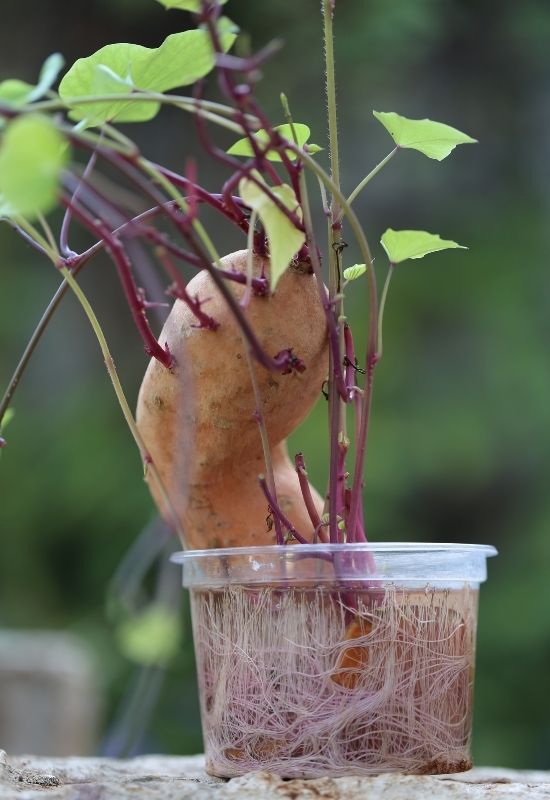
You can grow sweet potatoes from scraps the same way that you grow regular potatoes. They can be regrown in sections, but unlike regular potatoes, you can grow sweet potatoes in water and soil. Growing sweet potatoes in water can be a fun project for kids to try.
4. Regrow Ginger From Store-Bought Ginger Roots
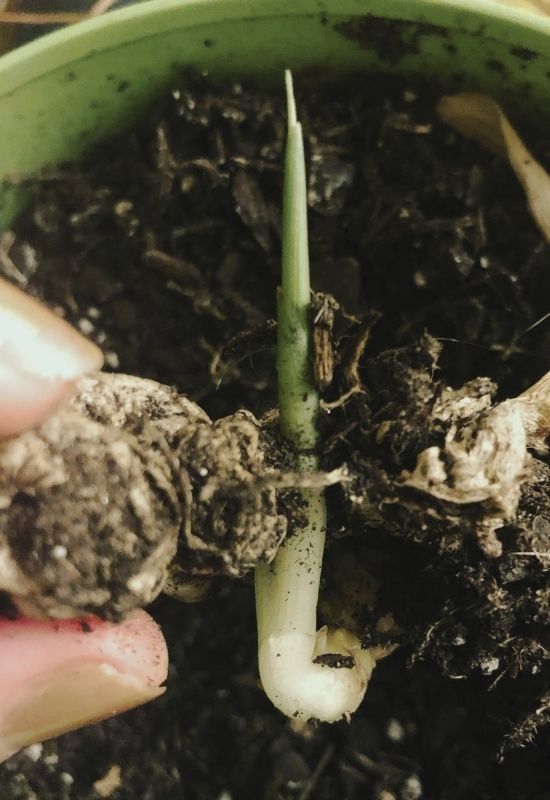
If you use ginger in many of your dinner dishes, learning how to grow ginger from scraps is a smart idea. Ginger root is relatively easy to grow, and it gives you a way to always have a fresh supply of finger on hand.
5. Regrow Mushrooms From Ends
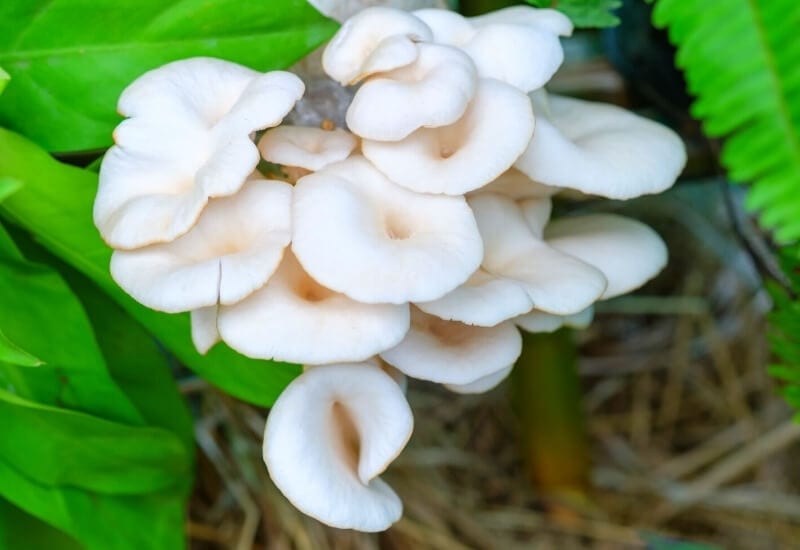
This one has to go towards the bottom of the list because it’s harder than some other scraps.
Growing mushrooms at home, in general, is trickier than other veggies, but it’s worth the wait and struggle. It’s not necessarily a root veggie, but you do plant the stem!
For best results, add compost or used coffee grounds to the oil, and keep them in a place where they will be chilly at night. It’s typically best to keep them inside.
Fruits You Can Easily Regrow From Scraps
1. Grow Pineapple from It’s Top
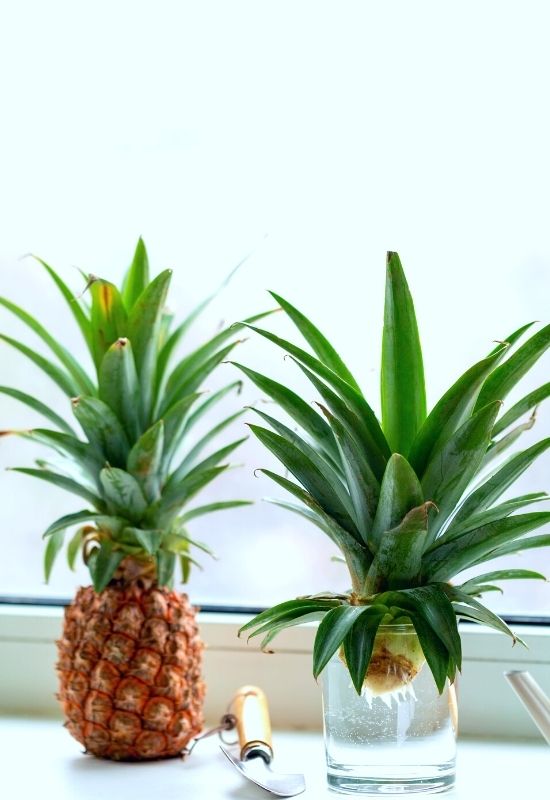
Everyone thinks that you have to live in a tropical region to grow pineapples, but you don’t! All you need to do is grab a fresh pineapple in the store and get started.
The water needs to be changed often, typically every other day, and the roots will start to appear in a week or two. Then, you can transplant it into your container with potting soil. For those who live in colder areas, you need to grow pineapples indoors.
2. Grow Avocado Plants From Pits
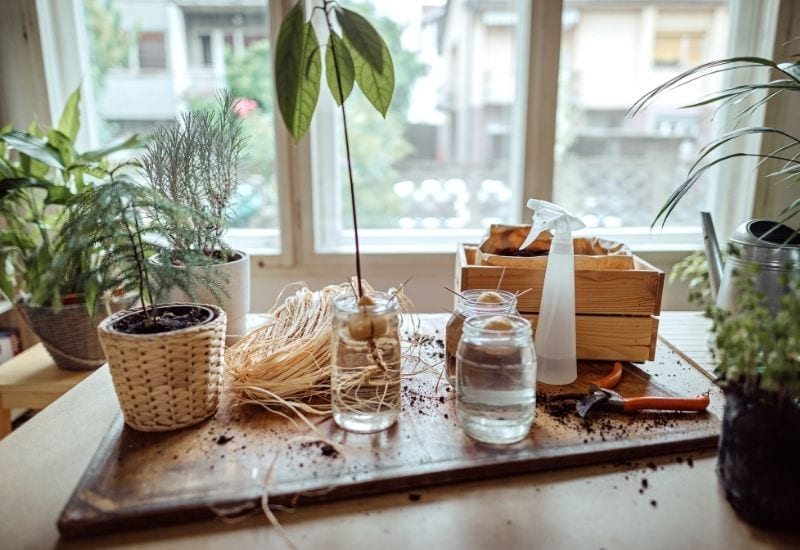
If you love avocados, you can use the seeds to grow your avocados at home. While you might not be able to grow avocados outside depending on where you live, they can be grown inside.
Growing avocados from scraps takes patience. It can take up to six weeks for roots to appear, and once the stem is 6 inches tall, you can plant it in the soil.
Regrowing Fruits from Seeds
Many citrus fruits and fruits, in general, can be grown from their seeds, but we know that seeds don’t always equal scraps. All fruit trees start as seeds, and while it takes years for fruit trees to grow, you can save the seeds out of the fruits you eat and start your fruit trees at home.
Citrus trees are a favorite because they grow best in containers. For example, Apple and pear trees need to be grown outside, but growing lemon trees indoors in containers is something you can do.
If you want to try growing a lemon tree from the seeds after you eat one, here’s what you can do.
You’ll need to wait years for the fruit tree to mature and develop. However, until they bear fruit, citrus trees are fragrant and make a beautiful houseplant.
Try Growing Veggies from Scraps
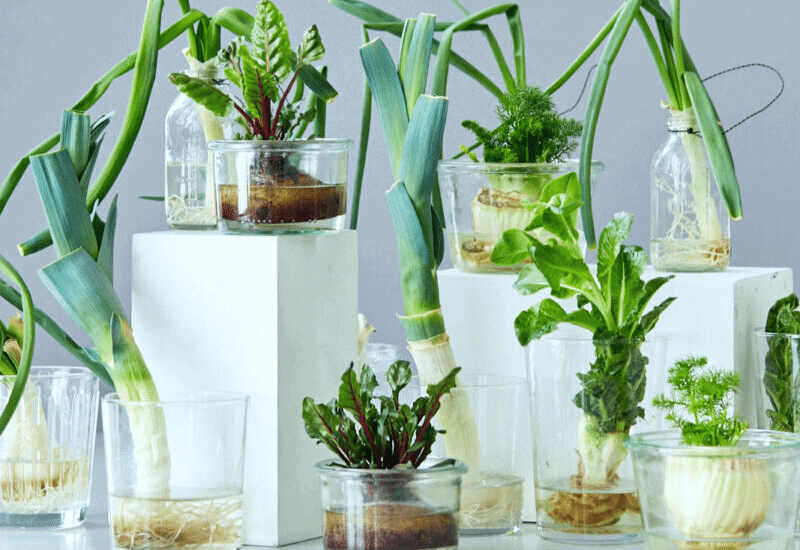
You can regrow all vegetables, fruits, and herbs in one way or another. Growing vegetables from scraps can help you stretch your grocery budget and enables you to stay in touch with where you get your food.

Written By
Amber Noyes
Amber Noyes was born and raised in a suburban California town, San Mateo. She holds a master’s degree in horticulture from the University of California as well as a BS in Biology from the University of San Francisco. With experience working on an organic farm, water conservation research, farmers’ markets, and plant nursery, she understands what makes plants thrive and how we can better understand the connection between microclimate and plant health. When she’s not on the land, Amber loves informing people of new ideas/things related to gardening, especially organic gardening, houseplants, and growing plants in a small space.

Another great article! Thanks!